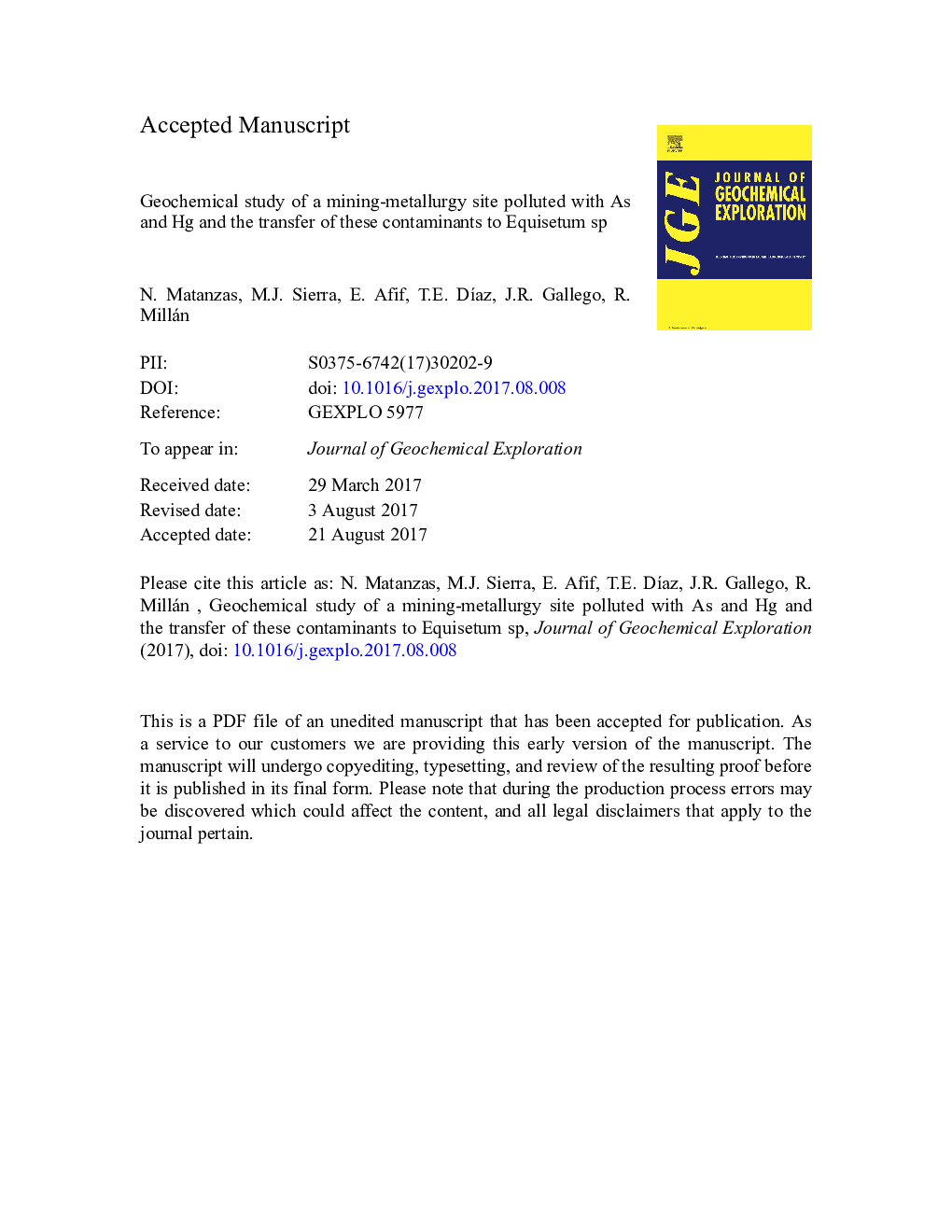| Article ID | Journal | Published Year | Pages | File Type |
|---|---|---|---|---|
| 5754510 | Journal of Geochemical Exploration | 2017 | 27 Pages |
Abstract
Mining-metallurgy waste in uncontrolled disposal sites causes soil pollution. In this context, former mining sites have a complex legacy of contamination. Here we studied the paradigmatic site of La Soterraña (Asturias, NW Spain) after >Â 40Â years of abandonment and weathering. First, a multivariate study of the geochemistry of the soil-waste system revealed average concentrations of thousands of ppm for Hg, and tens of thousands for As, whereas other elements of concern were also well-above soil threshold levels. Remarkably, and in spite of the potential toxicity of the waste mixed in the soil, the incipient soil overlaying the spoil heap has been colonised by pioneer plants that are tolerant to high metal(loid) content. Of note, we observed the predominance of Equisetum clusters in a random-like distribution and the preference of these plants for Al- and K-rich soils irrespective of As and Hg pollution levels. Interestingly, Equisetum showed low efficiency for As accumulation (excluder) but high efficiency for Hg accumulation (bioaccumulation factors clearly above 1) in its tissues. On the basis of these results, we propose that the Equisetum-soil system deserves further attention in the context of the phytoremediation of Hg-polluted soils.
Related Topics
Physical Sciences and Engineering
Earth and Planetary Sciences
Economic Geology
Authors
N. Matanzas, M.J. Sierra, E. Afif, T.E. DÃaz, J.R. Gallego, R. Millán,
